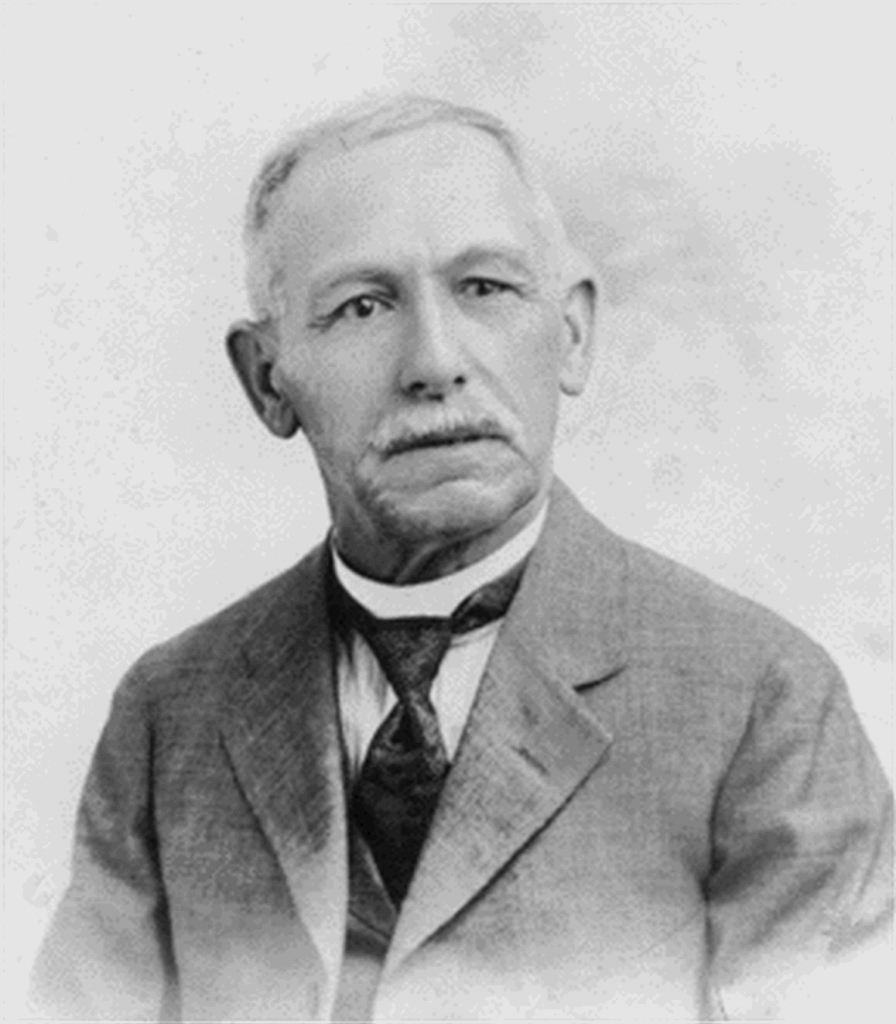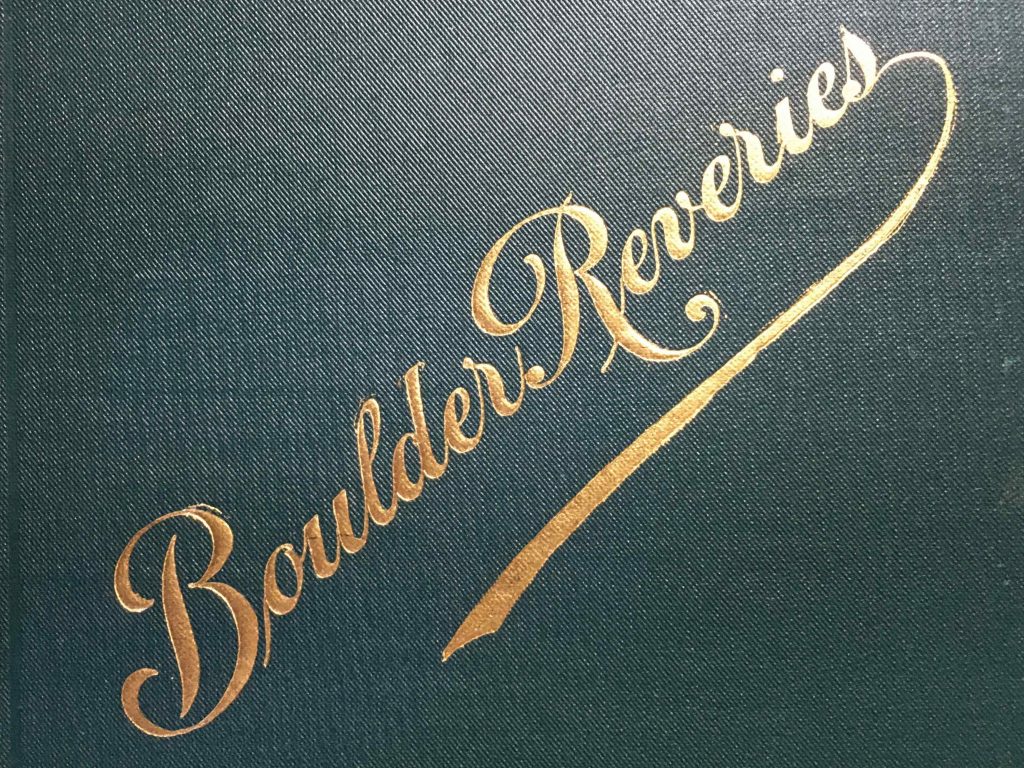
Unknown author / Public domain
Each pebble has a past; each tiny grain of clay and soil a future. The boulder on the hillside, how came it there and when? ‘Tis but an atom as compared with the bulk of the great round earth beneath, yet ’tis as worthy as a theme of thought.
THE TRANSITION FROM SIMPSON TO BLETCHLEY WAS JARRING. After the simple, straightforward sentences and comical scenes of Simpson’s Florida, Bletchley’s pontifications from north-central Indiana were tough going, like climbing the face of a sand dune in steel-toed hiking boots. Blatchley’s book is far more introspective and sullen. Written almost entirely as diary entries composed in fountain pen ink while the author was resting on a boulder in a wooded pasture, the book is an admixture of observations of the close-at-hand (mostly insects and flowers), ponderings on time’s passage (deep time and human transience), and occasional brow-beatings of his own supposed inability to make better use of his hours. (Given that he published a couple of dozen scientific monographs and books over his lifetime, I find that line unconvincing.) The language is frequently affected, and sometimes he gushes forth in lines that feel like fortune cookie clichés, even now, over 100 years later:
Possess thyself in patience, O my soul! Let seconds be as days unto thy reckoning. Do well the little things which come thy way. Think well the thoughts thou wouldst impress upon the table of eternity.
At one point, Blatchley describes the debris in a rural brook after a flood in these words:
Often-times in the bends of the stream are bunches of drift composed of logs, chips, pieces of bark, limbs, rails, boards, dead weeds and leaves, flotsam and jetsam of the freshet days, all heterogeneously mingled….
What an apt description of this book! There are images and ideas to be mined here, but there is also much to be, well, waded through. Part of it falls on the author’s book design — snippets of reflections from a boulder and along a nearby stream, mostly in the summer months, spanning several years. What could have been a fascinating study of place in nature over the course of a year (one that would have fit in well with many another nature book of the time) is lost due to the many missing months. Blatchley says little about himself (and his Wikipedia bio is fairly minimal), but I get the sense that he is writing from a summer retreat in the country (he mentions a city home at one point). By framing the book as reveries, he opened the door to saying pretty much whatever he felt like saying. It isn’t quite a nature book, or a book of philosophy, or of poetry. Unfortunately, for all that there are some intriguing passages, I cannot even find it possible to point to a page and say, “If only the rest of the book were like this.” Still, there are gems here, and let us explore them.
MY FAVORITE ASPECTS OF BLATCHLEY’S BOOK ARE HIS CONTEMPLATIONS OF ELEMENTAL FORCES AND DEEP TIME. He writes, for instance, about how matter and energy are united in living beings. He speaks of the forces of nature, and how glaciers have shaped the Indiana countryside. And always there is the presence of time — both human time (the time between entries, the span of person’s life) and deep time (the time it took for rocks to form and land be shaped). Consider this passage, in which Blatchley finds a bit of quartz and visualizes its story:
Stooping I pick up a piece of semi-transparent quartz; pure white, vitreous, and in outline roughly angular; yet worn by abrasion until its sharp edges and corners are rounded. How came it here? Go back through the centuries to the ice sheet, four hundred feet and more in thickness, which once covered this spot. Follow that sheet northward to some deep ravine whose edges are clothed with fir and pine, and there, in the dense Canadian wilderness, will you find the mother ledge of quartz, gleaming pure and white, from which this piece was broken. Cold, hard, and durable enough to withstand all elements of the present, it harks back to that age when ice was its master, bearing it onward in vise-like grip to be dropped on or near its present resting place. One fragment of matter, without life, thought or motion, has, after a lapse of thousands of centuries, met another endowed with these, and has been connected, at least in thought, with the ledge of which it was once a part.
OCCASIONALLY, TOO, BLATCHLEY WROTE ABOUT FLOWS IN NATURE, IN A MANNER THAT HINTED, AT LEAST, AT ECOLOGICAL SYSTEMS THINKING. Here is one of his finest (in my opinion) forays into the topic — in this case, the flow from plant sap to aphid honey to ant nourishment:
…I noted by the pathway a clump of curled dock on the stems of which were hundreds of dark, leaden-gray plant-lice, or aphids, their bodies swelling with the juices that they had imbibed or rather sucked, from the soft succulent stems. Over the dock there crawled rapidly numerous large, black ants which, as they moved, were waving their antennae swiftly to and fro as if in search of something lost. As I looked, an ant approached closely one of the thicker-bodied of the lice, when the latter turned its abdomen upward and exuded therefrom a drop of liquid, clear as crystal . With a single lap the ant swallowed the morsel of “honey-dew.” Thus is the juice of the dock transmitted through the body of the aphis into the stomach of the ant, undergoing, doubtless, on the way a chemical change which renders it sweet and to the especial liking of that insect. Wonderful is the relationship thus existing between the organic matter in the soil, the plant and the two insects. Interesting the process by which that inorganic matter is fitted for the food of the higher form, the ant. Varied the changes which matter must undergo as a part of the earth and the dwellers thereon during its unceasing round of existence.
AS AN ENTOMOLOGIST, BLATCHLEY APPRECIATED, AND CELEBRATED, THE SMALL AND OVERLOOKED, AND HOW THOSE THINGS INTO A LARGER STORY. That could be a piece of quartz, or an aphid on a dock plant. Everything in nature belonged, and existed in some sort of relationship with other objects and beings. But I will stop here, lest I begin to put words and ideas into Blatchley’s book that he never quite managed to express. I will close with this thought about observing natural relationships:
To a true naturalist nothing in nature is lowly, nothing is isolated. An inter-relationship, and inter-dependence, is everywhere visible. However small, however stunted and ill shaped, nothing natural seems out of place.

FINALLY, A FEW WORDS ABOUT THE COPY OF THIS BOOK I READ. One thing I have noticed about all of W. S. Blatchley’s books is that they were published by the Nature Publishing Company and used a similar front cover design with title in gold at a jaunty angle. I strongly suspect that the Nature Publishing Company label was Blatchley’s own. According to a further note on the copyright page, it was printed by Wm. B. Burford of Indianapolis. It includes several black and white photographs of passable artistry, scattered throughout the pages. There is no writing on my copy, and therefore I can say nothing further of its history.